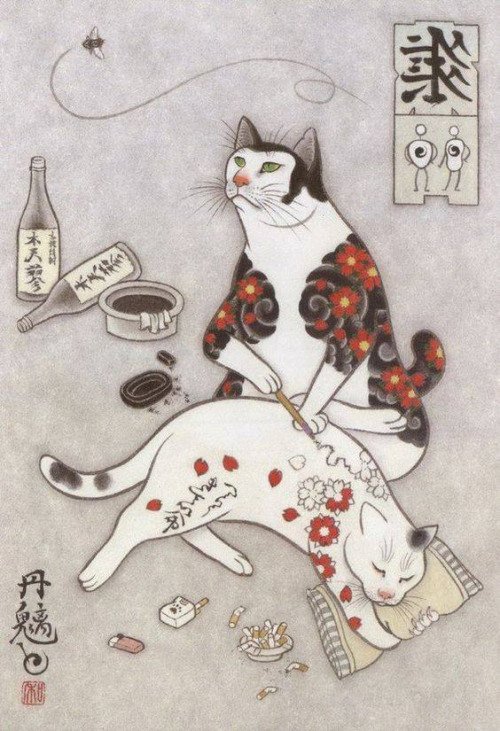Kazuaki Horitomo is a California-based Japanese artist who combines two of his great passions – tattoos and cats – into one. As an illustrator and tattoo artist, Horitomo is steeped in the Japanese tradition of tebori (a technique of tattooing by hand) and his illustrations reflect that. Some of our favorites works are the humorous and surreal depictions of cats performing tebori on other cats.
Horitomo’s brand Monmon Cats derives its name from monmon, the old slang word in Japanese for tattoos. Horitomo currently works at State of Grace Tattoo in San Jose. But if tattooing isn’t your thing, you can also pick up his book, or buy prints from his shop. Or you can just follow him on Instagram.
Via Spoon & Tamago, where you can see much more! Now I want to tattoo one of the cats with rats.


















